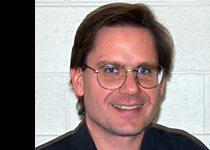
Contact
Our research is directed toward elucidating the evolution of bacterial genomes, including their size, composition, variability and organization. In other words, why do genomes have the genes that they do? An understanding of the evolutionary process that leads to differences in genomes will shed light on how species themselves differentiate. We take computations, theoretical and experimental approaches to understanding how genomes evolve.
Speciation. Bacterial speciation - the process by which lineages become genetically and ecologically distinct from one another - is quite different from its eukaryotic counterpart. The differences arise from both the manner by which bacteria adapt (by gene acquisition, rather than gene modification) and the constraints on their gene exchange. Our work has supported a "fragmented" model of speciation, whereby lineages become genetically isolated on a gene-by-gene basis over a period of tens of millions of years.
Ecological adaptation. Which are the first genes to become genetically isolated in nascent species? Among the earliest diverging genes in the Salmonella chromosome are those that encode the O-antigen biosynthetic machinery. We have been investigating the role of protozoan predation in driving this diversification. Here, different antigens allow the newly-diverging Salmonella to escape protozoan predators in different environments.
Genomic architecture. The fate of a newly-arrived gene is the function of two factors. Its likelhood of retention increases as it provides an increasingly beneficial function. However, its insertion may also be detrimental in interfering with genome-wide patterns fo information required to successfully manipulate the massive DNA polymer duing growth and reproduction. We study the embdedd information - here termed architecture - which differs between organisms and controls the flow of genes between taxa.
Dr. Lawrence is seeking a graduate student or post-doctoral researcher with interests in computational biology and genome evolution.
- Castilleja Olmsted, Graduate Student
- Emily Schultz, Undergraduate Researcher
